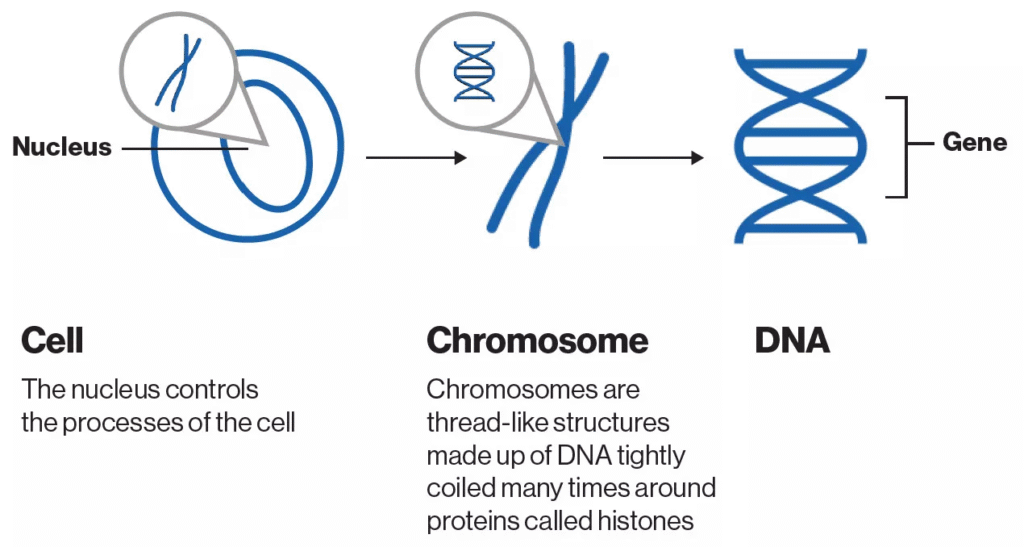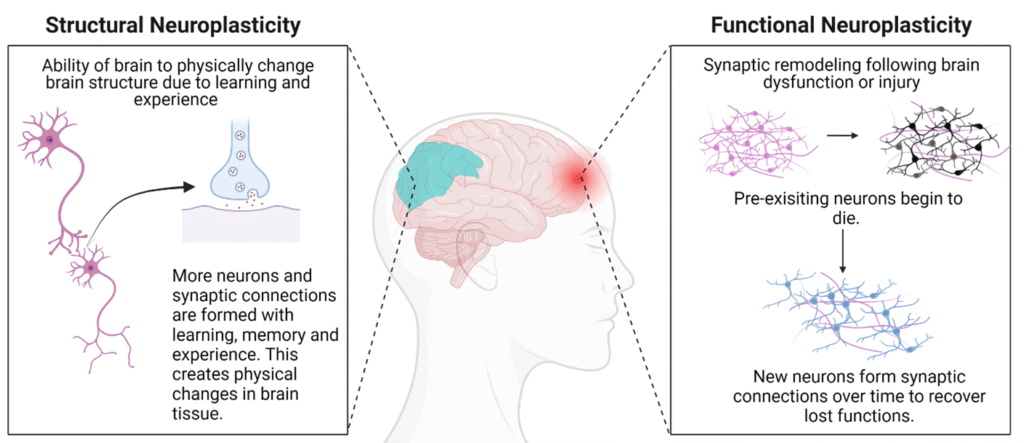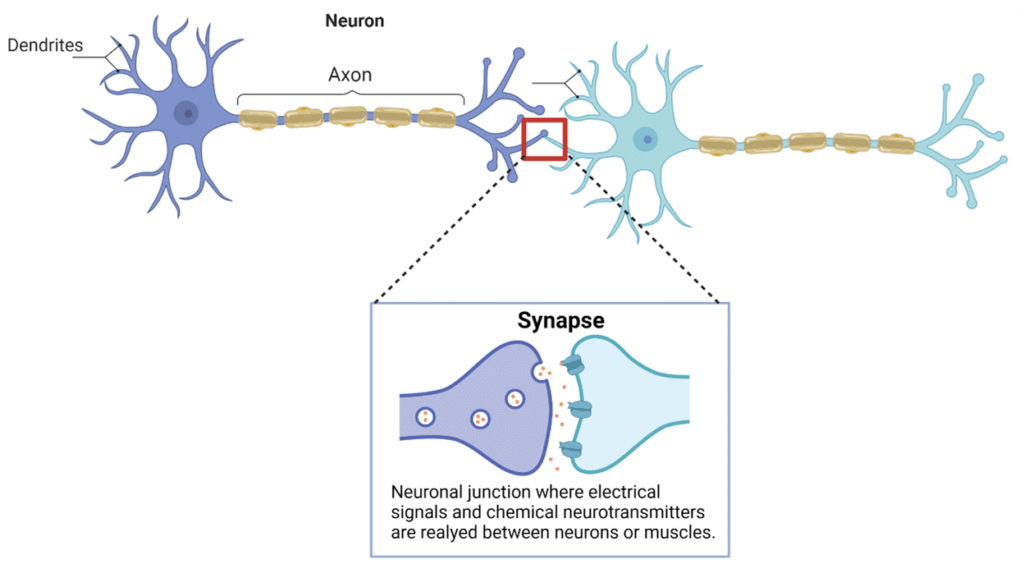- Introduction
- Understanding Numerical Intelligence: Are Math Skills Genetic or Learned?
- Is There a Genetic Predisposition Toward Mathematics?
- We’re Born with Math Genes. But Environment Shapes Our Brain
- Key Environmental Factors That Shape Math Ability
- How does the brain create new connections?
- Conclusions
Introduction
Is math ability genetic? Or is it something we develop through learning, effort, and exposure? This question has been debated for decades.
While some people seem to “get” numbers almost intuitively, others struggle to grasp basic concepts despite trying hard.
This type of debate isn’t limited to mathematics. Similar questions arise around music, language, and athletic performance.
The key question we will attempt to answer in this blog post is: how much does genetics affect our performance and how much does environment, education and personal motivation affect the development of math skills?
In this article, we’ll explore what latest scientific research says about the possible genetic and environmental factors behind numerical intelligence. We’re not looking for a simple answer, but rather a better understanding of how these different forces might interact.
If you’re a teacher, educator, or student, this post is for you 🙂
Understanding Numerical Intelligence: Are Math Skills Genetic or Learned?
Numerical intelligence is a key part of overall cognitive development. It refers to the ability to understand quantities, reason with numbers, perform calculations, and solve math problems using logic and pattern recognition.
Scientific research shows that early exposure to numbers and math talk plays a crucial role. Children with limited early stimulation often develop weaker number-word knowledge and poorer foundational math skills (Lucangeli, 2013).
Neuroplasticity research shows structured practice leads to measurable brain changes in areas tied to number processing (e.g. intraparietal sulcus). Without ongoing practice, these neural gains can fade. This reinforces the idea that math skill must be maintained or it will decline (Afolabi, 2024).
Numerical intelligence, therefore, is not limited to a simple accumulation of mnemonic and procedural knowledge; it involves the development of deeper skills, such as logical-sequential thinking, emotional and cognitive skills (Lucangeli, 2013), critical thinking in problem-solving, use of patterns, and the ability to recognise and create mathematical connections (Boaler, 2018)
Is There a Genetic Predisposition Toward Mathematics?
Genetic vs. Hereditary
To Start: What’s the Difference Between a Gene and Heredity?
- A gene is the basic physical and functional unit of heredity. Genes are made up of DNA.
- Hereditary refers to the transmission of genetic characteristics from parents to their children.
Humans have approximately 20,000–25,000 protein-coding genes.
When scientists say a trait is genetic, they mean it’s tied to how our genes function. For example, certain genes influence how efficiently our brain processes numbers.
On the other hand, hereditary refers specifically to traits passed down from parent to child. Think about your own story: On average, siblings share 50% of their genes. Heredity is a game of chance; you get 50% your genes from each parent, but which half is random. That’s why siblings can have very different math abilities.
For a more information about the structure and difference between Nucleus, Chromosome, DNA and Gene see this chart.

We’re Born with Math Genes. But Environment Shapes Our Brain
For example, a child may be born with a heritable predisposition for math ability, influenced by genetic factors. However, math skills can improve or decline over time through a dynamic interaction between genes and the environment (Skeide et al., 2020).
A growing body of research confirms that math ability is heritable and influenced by genes and environment.
One twin study by Hart et al. (2009), “The ABCs of Math,” analyzed 314 same-sex monozygotic and dizygotic twin pairs. The study found heritability estimates ranging from 0.00 to 0.63 for skills like computation and problem-solving, highlighting that genetics contributes to individual differences in math performance.
A meta-analysis of over 11,500 twin pairs confirmed that as children grow, the genetic influence on cognitive abilities—including math—becomes stronger (Briley & Tucker‑Drob, 2013)
Geneticist Prof. Yulia Kovas reinforces this idea. In a 2024 BBC interview, she explained that monozygotic (identical) twins tend to show higher similarity in mathematical ability than dizygotic twins, underscoring that the family environment alone doesn’t account for the differences, genes matter, too.
One of the most cited longitudinal studies on this topic is the UK-based TEDs study, which followed over 10,000 twins. Findings suggest that around 50–60% of variance in mathematical ability is explained by genetic factors, with the remaining 40–50% tied to environment, including school experiences, socio-economic status, home support, personal motivation, and informal exposure to math.
Findings suggest that up to 50–60% of variance in mathematical ability may be explained by genetic factors.
What it does mean for your kid or students? As the environment (like math anxiety, school, parents, early input) plays a big role. As children grow, they start choosing what they enjoy or are naturally good at. Over time, they’ll gravitate toward their own strengths, what the Greeks called their “daimon”, their inner drive or talent.
Recent research has identified several genes associated with mathematical ability, each contributing in different ways to brain development and cognitive processing:
What does mean? Are some people born with a special talent (DNA) for math?
There is no single math gene, instead, a combined effect of hundreds of genes each playing a small influence.
Recent research has identified several genes associated with mathematical ability, each contributing in different ways to brain development and cognitive processing:
- ROBO1, A gene involved in brain connectivity, associated with numerical processing through its influence on the right parietal cortex, a region tied to quantity representation (Skeide et al., PLOS Biology, 2020).
- SPOCK1: Involved in synaptic development and cognitive performance. A 2017 genome-wide association study (GWAS) found links between SPOCK1 variants and math scores in over 3,000 Chinese schoolchildren.
- DRD2: A dopamine receptor gene tied to working memory and attention—both key components of math learning. A 2024 study showed that DRD2 interacts with parental education level, meaning that the same genetic variant can lead to different outcomes depending on environmental context (BMC Psychology, 2024).
- DCDC2: Known for its role in neuronal migration and previously associated with dyslexia, DCDC2 also appears in studies on mathematical difficulties such as developmental dyscalculia.
Still, it’s important to clarify: A 2023 study on 1,146 Chinese elementary students confirmed that genetic variation matters, but educational quality and early exposure strongly affect outcomes.
The takeaway? While some individuals may have a genetic edge, math ability is not fixed at birth. Through neuroplasticity, structured teaching, and regular engagement, the brain can adapt and strengthen numerical skills, regardless of starting point.
Key Environmental Factors That Shape Math Ability
Math Ability Can Grow: What Neuroplasticity Teaches Us
For a long time, intelligence and math ability were seen as fixed traits, something you were either born with or not. But modern neuroscience tells a different story.
Our brain is not static and wth the right input it adapts and improves. The brain has a remarkable ability to change itself through a process called neuroplasticity. This means that with experience, practice, feedback, neural connections can be strengthened, reorganized, or even newly formed.
How does the brain create new connections?
When we learn something new neurons in the brain fire and form new pathways. With repetition, these pathways become stronger, making it easier to recall and apply the skill next time. This is especially true when learning is:
- Active (involving problem-solving, not just memorization)
- Emotional (connected to confidence, fear, or curiosity)
- Social (involving feedback, discussion, or explanation to others)
Mistakes, in particular, have been shown to activate brain growth, especially when followed by correction and reflection (Boaler, 2016).
Neuroplasticity is strongest during early childhood and adolescence, when the brain is still developing. However, it doesn’t stop in adulthood.
Neuroplasticity is often categorized into two types: structural neuroplasticity and functional neuroplasticity.

Structural neuroplasticity refers to physical brain tissue remodeling in response to learning and new experiences. When we learn a new concept (memory formation), specific neurons in our brain activate. The brain adapts to this information by creating new neural pathways.

When we solve math problems or learn a new concept, neurons activate and talk to each other across synapses. The more we practice, the more these connections strengthen, this is neuroplasticity in action. A synapse is a bridge between 2 neurons (bridge between new and old information processing new information).
What are the environmental factors?
Environmental factors include a wide range of conditions that affect learning outcomes:
- Early exposure to numbers through play or daily conversation
- The quality of instruction and teaching methods
- Emotional safety in the classroom
- Growth Mindset: mistakes and struggle are essential parts of learning, not signs of failure.
- Beliefs and mindsets: both from the student and the teacher
The way students experience math emotionally, whether through fear, pressure, or confidence, can have a long-term impact on how they learn. Emotional factors, math anxiety and self-image are not secondary: they actively influence cognitive performance in mathematics.
Psychologist Carol Dweck (2006) introduced the growth mindset. Her research shows learners who believe intelligence can be developed are more likely to persist through challenges and improve their skills.
Gladwell observes that students from East Asian countries often perform well in mathematics because of a cultural mindset built on persistence, effort, and deep work.
Finally, studies in neuroplasticity show that the human brain can physically change through experience. Even areas like numerical reasoning—once thought to be rigid—can be strengthened with targeted, high-quality instruction and a supportive classroom climate.
Conclusions
While genes provide a foundation they don’t set a ceiling, indeed, mathematical ability is not fixed at birth. It reflects a dynamic interaction between genetic predispositions and environmental experiences.
Scientific studies, including twin research and genome-wide association studies, have shown that math performance has a moderate to high heritability, especially from late childhood onward. Genes like ROBO1, SPOCK1, DRD2, and DCDC2 are involved in processes such as brain connectivity, working memory, and attention, all of which contribute to numerical reasoning.
At the same time, environmental influences remain powerful at every stage. Research on neuroplasticity confirms that the brain’s ability to change through experience continues well beyond early childhood. Factors such as early number exposure, mindset, classroom environment, emotional safety, and teaching quality can all significantly boost, or limit, a student’s mathematical growth.
Mindset also matters: students who believe they can improve tend to engage more deeply and recover from mistakes, activating brain regions that support learning.
While some individuals may begin with a genetic advantage, math ability is highly responsive to what happens in the classroom, at home, and in everyday life. Every student, regardless of background, can make substantial progress when given the freedom to learn through effort, error, and persistence.
Bibliography
Boaler, J. (2016). Mathematical Mindsets: Unleashing Students’ Potential Through Creative Math, Inspiring Messages and Innovative Teaching. Jossey-Bass.
Borasi, R. (1996). Reconceiving Mathematics Instruction: A Focus on Errors.
Dweck, C. (2006). Mindset: The New Psychology of Success.
Gladwell, M. (2008). Outliers: The story of success. Little, Brown, and Company.
Hart, S. A., Petrill, S. A., Thompson, L. A., & Plomin, R. (2009). The ABCs of Math: A Genetic Analysis of Mathematics and Its Links With Reading Ability and General Cognitive Ability. Journal of Educational Psychology, 101(2), 388-402.
Hattie, J., Timperley, H. (2007). The Power of Feedback. Review of Educational Research, 77(1), 81-112.
Hiebert, J., & Grouws, D. A. (2007). The Effects of Classroom Mathematics Teaching on Students’ Learning. Second Handbook of Research on Mathematics Teaching and Learning.
Johnson, D. W., Johnson, R. T., & Holubec, E. J. (1994). Cooperative Learning in the Classroom.
Kapur, M. (2008). Productive Failure. Cognition and Instruction, 26(3), 379-424.
Lucangeli, D., Poli, S., & Molin, A. (2017). Numerical intelligence – Volume 1: Cognitive and metacognitive skills in the construction of numerical knowledge from ages 3 to 6. Series: Numerical and logical-scientific cognition enhancement programs.
Skeide, M. A., Gollwitzer, A., Grotheer, M., Kaufmann, L., & Friederici, A. D. (2020). SPOCK1 Polymorphism Is Associated With Individual Differences in Arithmetic Performance in Children. PLOS Biology, 18(7), e3000721.
Skeide, M. A., Wehrmann, K., Emami, Z., Kirsten, H., Hartmann, A. M., Rujescu, D., & Legascreen Consortium. (2020). Neurobiological origins of individual differences in mathematical ability. PLOS Biology, 18(10), e3000871.
Steuer, G., Rosentritt-Brunn, G., Dresel, M. (2013). Dealing with errors in mathematics: The relationship between students’ achievement goal orientations, their tolerance of errors, and their individual characteristics. ZDM, 45(6), 789-802.
Rimfeld, K., Malanchini, M., Spargo, T., Spickernell, G., Selzam, S., McMillan, A., Dale, P. S., Eley, T. C., & Plomin, R. (2019). Twins Early Development Study: A genetically sensitive investigation into behavioral and cognitive development from infancy to emerging adulthood. Twin Research and Human Genetics. Cambridge University Press.
Yeager, D. S., Dweck, C. S. (2012). Mindsets That Promote Resilience: When Students Believe That Personal Characteristics Can Be Developed. Educational Psychologist, 47(4), 302-314.
Zhang, L., Wang, Z., Zhu, Z., Yang, Q., Cheng, C., Zhao, S., … & Zhao, J. (2023). A genome-wide association study identified new variants associated with mathematical abilities in Chinese children. Genes, Brain and Behavior, 22(2), e12843.
Zhang, Y., Zhou, Q., Wu, Y., Sun, C., Cao, X., Zhang, H., & Xie, P. (2020). Genome-Wide Association Study Identifies SPOCK1 As a Susceptibility Gene for Mathematical Ability. PLOS Biology, 18(10), e3000845.

